 Members of the forest industry and the provincial government weighed in Monday on the Trump administration’s decision to raise tariffs on Canadian softwood lumber. Last week, the U.S. Commerce Department decided to raise anti-dumping duties on Canadian softwood to 20.56 per cent. A news release stated the province’s forest industry is “deeply troubled” by the decision to increase the duties by over 14 per cent. “Increasing anti-dumping duties to 20.56 per cent from the current average rate of 7.66 per cent is unjustified,” read the statement. “New Brunswick’s softwood lumber producers already face punitive and unfair anti-dumping and countervailing duties.” According to the statement, when combined with an anticipated rise in countervailing duties, the new increase to anti-dumping duties will mean an expected new total of 34 per cent by the middle of August.
Members of the forest industry and the provincial government weighed in Monday on the Trump administration’s decision to raise tariffs on Canadian softwood lumber. Last week, the U.S. Commerce Department decided to raise anti-dumping duties on Canadian softwood to 20.56 per cent. A news release stated the province’s forest industry is “deeply troubled” by the decision to increase the duties by over 14 per cent. “Increasing anti-dumping duties to 20.56 per cent from the current average rate of 7.66 per cent is unjustified,” read the statement. “New Brunswick’s softwood lumber producers already face punitive and unfair anti-dumping and countervailing duties.” According to the statement, when combined with an anticipated rise in countervailing duties, the new increase to anti-dumping duties will mean an expected new total of 34 per cent by the middle of August.
Related content:
- J.D. Irving Press Release – Impact of new duties on New Brunswick’s forestry industry
 A cornerstone industry of northwestern Ontario is at risk, says a regional municipal group, with the decision by the U.S. Department of Commerce to raise anti-dumping duties on Canadian softwood lumber to 20.56 per cent. “Forestry is the economic lifeblood of communities across northwestern Ontario,” said Rick Dumas, president of the Northwestern Ontario Municipal Association (NOMA), in a July 28 statement. “This unjustified and protectionist action will have a direct and harmful impact on workers, families, Indigenous communities, and local economies throughout our region.” The provincial government called the U.S. commerce department’s decision to increase duties on Canadian softwood lumber exports an “unjust burden” on American consumers that will raise construction costs in the U.S., make homes less affordable, and negatively impact economic growth on both sides of the border. “We remain firm in our position that these duties should be lifted entirely, for the benefit of workers and families on both sides of the border.”
A cornerstone industry of northwestern Ontario is at risk, says a regional municipal group, with the decision by the U.S. Department of Commerce to raise anti-dumping duties on Canadian softwood lumber to 20.56 per cent. “Forestry is the economic lifeblood of communities across northwestern Ontario,” said Rick Dumas, president of the Northwestern Ontario Municipal Association (NOMA), in a July 28 statement. “This unjustified and protectionist action will have a direct and harmful impact on workers, families, Indigenous communities, and local economies throughout our region.” The provincial government called the U.S. commerce department’s decision to increase duties on Canadian softwood lumber exports an “unjust burden” on American consumers that will raise construction costs in the U.S., make homes less affordable, and negatively impact economic growth on both sides of the border. “We remain firm in our position that these duties should be lifted entirely, for the benefit of workers and families on both sides of the border.”
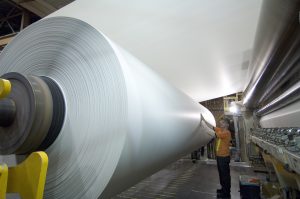 The final reel of paper from No.6, Tokoroa’s last remaining paper mill, once one of six, is being rolled under the smoke and steam of the mill’s chimneys. In November last year Kinleith’s owner, Oji Fibre Solutions, announced it would shutter the paper mill of its plant and move to importing paper to produce its packaging. Kinleith is losing at least 150 jobs, to say nothing of the contractors, maintenance and supplier businesses downstream. The announcement followed a string of paper mill closures across the country costing 300 jobs, which Oji and other operators attributed to untenable wholesale power costs and year on year losses. For Ian Farrell, who has worked at Kinleith since 1986 the writing was on the wall, though he struggled to accept it. “I thought the government surely wouldn’t let this happen,” he says on the Monday morning the paper mill closed. “We were the last paper manufacturing and packaging site left in the country.”
The final reel of paper from No.6, Tokoroa’s last remaining paper mill, once one of six, is being rolled under the smoke and steam of the mill’s chimneys. In November last year Kinleith’s owner, Oji Fibre Solutions, announced it would shutter the paper mill of its plant and move to importing paper to produce its packaging. Kinleith is losing at least 150 jobs, to say nothing of the contractors, maintenance and supplier businesses downstream. The announcement followed a string of paper mill closures across the country costing 300 jobs, which Oji and other operators attributed to untenable wholesale power costs and year on year losses. For Ian Farrell, who has worked at Kinleith since 1986 the writing was on the wall, though he struggled to accept it. “I thought the government surely wouldn’t let this happen,” he says on the Monday morning the paper mill closed. “We were the last paper manufacturing and packaging site left in the country.”
 There may have been dissension surrounding the Morris Street bikeway, but the Halifax mayor and regional council found common ground with mass timber. Mayor Andy Fillmore tabled a motion at Tuesday’s council meeting to direct the chief administrative officer to prepare a staff report that, with changes to land-use bylaws and amendments to a municipal planning strategy, would knock down barriers to mass timber construction to help expedite housing builds. That would include the potential to increase the height of built-form requirements from 10 to 12 storeys for mass timber construction. The motion passed unanimously. “The principal reason (for supporting the mayor’s motion) is that this unlocks some newfound potential in local supply,” Coun. Jean St-Amand (Bedford-Wentworth) said. “I think that’s something that can have a very positive impact to the acceleration of our ability and our capacity to build.
There may have been dissension surrounding the Morris Street bikeway, but the Halifax mayor and regional council found common ground with mass timber. Mayor Andy Fillmore tabled a motion at Tuesday’s council meeting to direct the chief administrative officer to prepare a staff report that, with changes to land-use bylaws and amendments to a municipal planning strategy, would knock down barriers to mass timber construction to help expedite housing builds. That would include the potential to increase the height of built-form requirements from 10 to 12 storeys for mass timber construction. The motion passed unanimously. “The principal reason (for supporting the mayor’s motion) is that this unlocks some newfound potential in local supply,” Coun. Jean St-Amand (Bedford-Wentworth) said. “I think that’s something that can have a very positive impact to the acceleration of our ability and our capacity to build.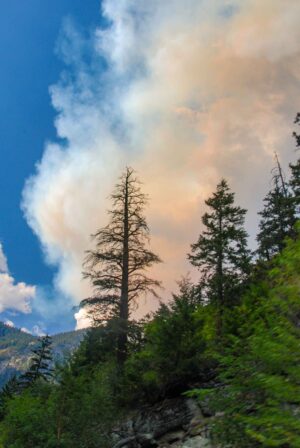 The Mount Underwood fire near Port Alberni wasn’t your typical Vancouver Island blaze. But what is normal is changing. Thanks to droughts and heat waves, tiny fires that crews were once able to extinguish in a matter of hours are now ballooning into major blazes. Historically, fires have been nearly non-existent in coastal B.C., and the playbook for putting them out has been simple: Find fire. Spray water on it. Dig up hot spots. Case closed. This “direct attack” was possible because of the slow speed at which fires grow in coastal ecosystems. But the Mount Underwood fire, which ignited along the road connecting Port Alberni to Bamfield, spread rapidly, burning as a Rank 5 fire, with flames rising into the crowns of trees and up the mountainside. “In the seven years I’ve worked for the Coastal Fire Centre, I don’t think I’ve seen a fire like this on Vancouver Island,” Julia Caranci told CBC.
The Mount Underwood fire near Port Alberni wasn’t your typical Vancouver Island blaze. But what is normal is changing. Thanks to droughts and heat waves, tiny fires that crews were once able to extinguish in a matter of hours are now ballooning into major blazes. Historically, fires have been nearly non-existent in coastal B.C., and the playbook for putting them out has been simple: Find fire. Spray water on it. Dig up hot spots. Case closed. This “direct attack” was possible because of the slow speed at which fires grow in coastal ecosystems. But the Mount Underwood fire, which ignited along the road connecting Port Alberni to Bamfield, spread rapidly, burning as a Rank 5 fire, with flames rising into the crowns of trees and up the mountainside. “In the seven years I’ve worked for the Coastal Fire Centre, I don’t think I’ve seen a fire like this on Vancouver Island,” Julia Caranci told CBC.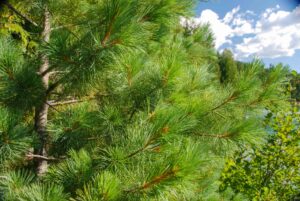 Over 70,000 new trees have been planted in Narrow Hills Provincial Park after the destructive Shoe Fire ripped through the area in May. The park, about 130 kilometres northeast of Prince Albert, Sask., is home to Gem Lakes and Lost Echo campgrounds, which remained closed for the season due to the wildfire. “There was a lot of enthusiasm to get the new life going back in the forest,” Pat MacKasey, a provincial park forest ecologist. MacKasey has been the supervisor of a five-person crew who have planted 73,080 Jack pine and white spruce trees since July. Trees have been planted in an area in Pine Lake that had previously been wiped out by a windstorm in the 1990s, he said. MacKasey says regrowth after that storm was slow, but new trees were eventually planted again in 2002 once forest health improved.
Over 70,000 new trees have been planted in Narrow Hills Provincial Park after the destructive Shoe Fire ripped through the area in May. The park, about 130 kilometres northeast of Prince Albert, Sask., is home to Gem Lakes and Lost Echo campgrounds, which remained closed for the season due to the wildfire. “There was a lot of enthusiasm to get the new life going back in the forest,” Pat MacKasey, a provincial park forest ecologist. MacKasey has been the supervisor of a five-person crew who have planted 73,080 Jack pine and white spruce trees since July. Trees have been planted in an area in Pine Lake that had previously been wiped out by a windstorm in the 1990s, he said. MacKasey says regrowth after that storm was slow, but new trees were eventually planted again in 2002 once forest health improved. The number and severity of wildfire damage claims are increasing partly because fire seasons are longer with more hectares burned, according to IBC spokesperson Adam Sutherland. “As we see the frequency and severity of claims growing, that’s putting pressure on premiums. “We know the risk is only going to grow. Insurance puts a price on risk. That’s why it’s paramount that we do much, much more as a society to reduce that, to better fireproof our communities and better protect our homes.” He said in addition to government action to reduce fire danger in the forests, residents need more incentives to protect their properties. “But then we also need to rethink our building codes and how we are developing our communities in the first place. That means moving away from wood shingles, wood roofs. No more vinyl siding. We need non-combustible materials on homes and interface fire zones for all new development.”
The number and severity of wildfire damage claims are increasing partly because fire seasons are longer with more hectares burned, according to IBC spokesperson Adam Sutherland. “As we see the frequency and severity of claims growing, that’s putting pressure on premiums. “We know the risk is only going to grow. Insurance puts a price on risk. That’s why it’s paramount that we do much, much more as a society to reduce that, to better fireproof our communities and better protect our homes.” He said in addition to government action to reduce fire danger in the forests, residents need more incentives to protect their properties. “But then we also need to rethink our building codes and how we are developing our communities in the first place. That means moving away from wood shingles, wood roofs. No more vinyl siding. We need non-combustible materials on homes and interface fire zones for all new development.” Castlegar sawmill and mass timber producer Kalesnikoff Lumber received a mention from Prime Minister Mark Carney on Aug. 5 during a visit to Kelowna. Carney was talking about his government’s Build Canada Homes initiative when he brought up Kalesnikoff’s innovations. The Build Canada Homes program prioritizes domestic materials in construction and requires companies contracting with the federal government to source Canadian lumber. It also calls for the use of Canadian technologies and resources in off-site construction of prefabricated and modular homes. “One example of the possibilities, just a few hours drive from here in Castlegar, Kalesnikoff Mass Timber recently opened its 100,000-square-foot mass timber prefabrication and modular facility – the first of its kind in North America,” said Carney. “They’re adding new products and services, including prefabricated wall panels, mass timber modules, and trusses designed and manufactured for construction efficiency.”
Castlegar sawmill and mass timber producer Kalesnikoff Lumber received a mention from Prime Minister Mark Carney on Aug. 5 during a visit to Kelowna. Carney was talking about his government’s Build Canada Homes initiative when he brought up Kalesnikoff’s innovations. The Build Canada Homes program prioritizes domestic materials in construction and requires companies contracting with the federal government to source Canadian lumber. It also calls for the use of Canadian technologies and resources in off-site construction of prefabricated and modular homes. “One example of the possibilities, just a few hours drive from here in Castlegar, Kalesnikoff Mass Timber recently opened its 100,000-square-foot mass timber prefabrication and modular facility – the first of its kind in North America,” said Carney. “They’re adding new products and services, including prefabricated wall panels, mass timber modules, and trusses designed and manufactured for construction efficiency.” Above average spending on Yukon wildfires is in the forecast due to rising costs of fuel, aircraft, vehicles, food and fire retardant, Yukon wildfire officials told reporters during a July 30 briefing. Officials indicated more spending doesn’t necessarily mean more fires; it relates to higher costs in general. “The cost of fuel is going up. The cost of aircrafts are going up. The cost of vehicles is going up. Fire retardant, which we used over a million litres of, has almost doubled in price in the past several years. Food for catering, for feeding all these crews. Obviously, the cost of food has gone up,” director of Yukon Wildland Fire Management Devin Bailey said at the mid-season briefing. “As everything gets more expensive, we’re going to see more expensive responses during fire season.”
Above average spending on Yukon wildfires is in the forecast due to rising costs of fuel, aircraft, vehicles, food and fire retardant, Yukon wildfire officials told reporters during a July 30 briefing. Officials indicated more spending doesn’t necessarily mean more fires; it relates to higher costs in general. “The cost of fuel is going up. The cost of aircrafts are going up. The cost of vehicles is going up. Fire retardant, which we used over a million litres of, has almost doubled in price in the past several years. Food for catering, for feeding all these crews. Obviously, the cost of food has gone up,” director of Yukon Wildland Fire Management Devin Bailey said at the mid-season briefing. “As everything gets more expensive, we’re going to see more expensive responses during fire season.” Gibsons council is renewing its push for stronger watershed protections and clearer oversight of forestry operations, following a staff report on
Gibsons council is renewing its push for stronger watershed protections and clearer oversight of forestry operations, following a staff report on 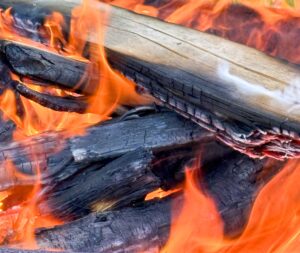 A monster firestorm roared through the pine and spruce forests of New Brunswick. It burned one-fifth of the province’s forests and raged through villages, reducing buildings to ash and killing at least 160 people — although historians believe that is likely a severe undercount. This was the Miramichi Fire, which 200 years ago this fall announced an era of megafires in North America. Commemorated in folk songs, documented in archives and seared into memory for those who lived through it, the Miramichi Fire to this day ranks among the largest and most devastating fires the continent has ever seen. The Miramichi Fire was the continent’s first megafire rooted in extracting resources from the land, but that century was packed with other examples that collectively destroyed thousands of buildings and caused millions in damages, all while claiming lives. Among the major fires were Quebec City in 1845, 1866, 1876 and 1881; St. John’s in 1846 and 1892; Toronto in 1849, 1885 and 1895; Montreal in 1850, 1852 and 1898 and both Calgary and Vancouver in 1886.
A monster firestorm roared through the pine and spruce forests of New Brunswick. It burned one-fifth of the province’s forests and raged through villages, reducing buildings to ash and killing at least 160 people — although historians believe that is likely a severe undercount. This was the Miramichi Fire, which 200 years ago this fall announced an era of megafires in North America. Commemorated in folk songs, documented in archives and seared into memory for those who lived through it, the Miramichi Fire to this day ranks among the largest and most devastating fires the continent has ever seen. The Miramichi Fire was the continent’s first megafire rooted in extracting resources from the land, but that century was packed with other examples that collectively destroyed thousands of buildings and caused millions in damages, all while claiming lives. Among the major fires were Quebec City in 1845, 1866, 1876 and 1881; St. John’s in 1846 and 1892; Toronto in 1849, 1885 and 1895; Montreal in 1850, 1852 and 1898 and both Calgary and Vancouver in 1886. Fostering inclusive economic development and ensuring that local communities, including Indigenous partners, benefit from these opportunities are key priorities for the Government of Canada. Today, Claude Guay, Parliamentary Secretary to the Minister of Energy and Natural Resources, concluded a two-day tour of Northern Quebec, where he highlighted the importance of Quebec’s mining and forest sectors in building Canada’s supply chains and export opportunities, creating good jobs, and strengthening reconciliation… Parliamentary Secretary Guay concluded the trip with a visit to Les Chantiers Chibougamau’s Kraft Pulp Mill in Lebel-sur-Quevillon and their head manufacturing plant in Chibougamau. These sites are key examples of Quebec’s forest sector excellence and innovation in modernizing the industry, accelerating affordable housing and promoting green construction using value-added Canadian wood-based products.
Fostering inclusive economic development and ensuring that local communities, including Indigenous partners, benefit from these opportunities are key priorities for the Government of Canada. Today, Claude Guay, Parliamentary Secretary to the Minister of Energy and Natural Resources, concluded a two-day tour of Northern Quebec, where he highlighted the importance of Quebec’s mining and forest sectors in building Canada’s supply chains and export opportunities, creating good jobs, and strengthening reconciliation… Parliamentary Secretary Guay concluded the trip with a visit to Les Chantiers Chibougamau’s Kraft Pulp Mill in Lebel-sur-Quevillon and their head manufacturing plant in Chibougamau. These sites are key examples of Quebec’s forest sector excellence and innovation in modernizing the industry, accelerating affordable housing and promoting green construction using value-added Canadian wood-based products. The 9th American Forest Congress has
The 9th American Forest Congress has 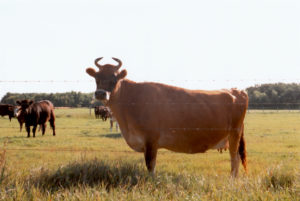 Wildfires are a natural part of the landscape in much of Central and Eastern Oregon. James “Jim Bob” Collins has seen the damage a wildfire can cause and the effects it has on the land after the smoke clears. His district had worked for months to receive a $21 million grant from the U.S. Department of Agriculture that would have gone to wildfire mitigation in forests and rangelands. But this summer, just as wildfire season was starting, the government walked back on its offer in Wheeler County and across the state. All told $90 million worth of conservation work is on hold across Oregon. That’s left ranchers like Collins and his neighbors, whose land bears the scars of last year’s fires, hoping the rest of this year’s wildfire season is uneventful, as he and the conservation district he serves explore new ways to pay for the work.
Wildfires are a natural part of the landscape in much of Central and Eastern Oregon. James “Jim Bob” Collins has seen the damage a wildfire can cause and the effects it has on the land after the smoke clears. His district had worked for months to receive a $21 million grant from the U.S. Department of Agriculture that would have gone to wildfire mitigation in forests and rangelands. But this summer, just as wildfire season was starting, the government walked back on its offer in Wheeler County and across the state. All told $90 million worth of conservation work is on hold across Oregon. That’s left ranchers like Collins and his neighbors, whose land bears the scars of last year’s fires, hoping the rest of this year’s wildfire season is uneventful, as he and the conservation district he serves explore new ways to pay for the work.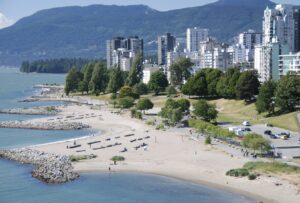 On the two-year anniversary of the deadly wildfires in Lahaina, Hawaii, the Arbor Day Foundation launched its effort to help replant lost tree canopy. The Foundation distributed more than 580 trees alongside its local planting partner The Outdoor Circle, in collaboration with Treecovery Hawaii and The Royal Lahaina Resort & Bungalows.“Recovery from a wildfire of this scale can take years, but the Arbor Day Foundation is committed to being here for the long haul. We’re proud to work alongside the passionate advocates at The Outdoor Circle to help regrow a flourishing community canopy,” said Dan Lambe, chief executive of the Arbor Day Foundation. “We know trees won’t replace all of what’s been lost in Lahaina, but they can help grow new roots of resilience and nurture hope for the future.”
On the two-year anniversary of the deadly wildfires in Lahaina, Hawaii, the Arbor Day Foundation launched its effort to help replant lost tree canopy. The Foundation distributed more than 580 trees alongside its local planting partner The Outdoor Circle, in collaboration with Treecovery Hawaii and The Royal Lahaina Resort & Bungalows.“Recovery from a wildfire of this scale can take years, but the Arbor Day Foundation is committed to being here for the long haul. We’re proud to work alongside the passionate advocates at The Outdoor Circle to help regrow a flourishing community canopy,” said Dan Lambe, chief executive of the Arbor Day Foundation. “We know trees won’t replace all of what’s been lost in Lahaina, but they can help grow new roots of resilience and nurture hope for the future.” Despite attempts to save it, the longstanding Pixelle Specialty Solutions in Chillicothe closed its doors permanently on Sunday. The southern Ohio paper mill announced its planned closure in April after nearly 200 years of operating in Ross County. Local leaders and state representatives alike pushed to delay its shuttering, but ultimately the company ceased production this weekend. Not only did the paper mill employ more than 800 people, it fed a larger industry in the state. Executive director of the Ohio Forestry Association Jenna Reese said the mill’s closure will hurt Ohio loggers. “This is gonna have ripple effects throughout the state,” she said. “We’re unfortunately anticipating attrition.” With nearly 8 million acres of forest in Ohio, logging is a major industry. It contributes $1.1 billion to the state economy annually, according to Reese. Forest products, more broadly, make up more than a quarter of Ohio’s agricultural industry, which tops the state.
Despite attempts to save it, the longstanding Pixelle Specialty Solutions in Chillicothe closed its doors permanently on Sunday. The southern Ohio paper mill announced its planned closure in April after nearly 200 years of operating in Ross County. Local leaders and state representatives alike pushed to delay its shuttering, but ultimately the company ceased production this weekend. Not only did the paper mill employ more than 800 people, it fed a larger industry in the state. Executive director of the Ohio Forestry Association Jenna Reese said the mill’s closure will hurt Ohio loggers. “This is gonna have ripple effects throughout the state,” she said. “We’re unfortunately anticipating attrition.” With nearly 8 million acres of forest in Ohio, logging is a major industry. It contributes $1.1 billion to the state economy annually, according to Reese. Forest products, more broadly, make up more than a quarter of Ohio’s agricultural industry, which tops the state.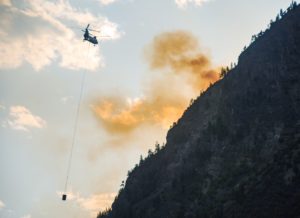 Every spring, Forest Service fire leaders meet to plan for the upcoming fire season. This year, some employees were shocked by the blunt remarks made during a meeting with forest supervisors and fire staff officers from across the Intermountain West. “We were told, ‘Help is not on the way,’” said one employee, who asked to remain anonymous for fear of losing their job. “I’ve never been told that before.” Agency leaders already knew it might be a bad wildfire season, made worse by having fewer hands available to help out. According to the employee High Country News spoke to, the Forest Service lost at least 1,800 fire-qualified, or “red-carded,” employees through layoffs, deferred resignation, and retirement offers. In total, 4,800 people left the agency. “We were told: Don’t commit to an attack thinking the cavalry is going to come,” the employee said. As fire activity continues to pick up across much of the West, that warning rings true. [a free subscription is required to read the original article,
Every spring, Forest Service fire leaders meet to plan for the upcoming fire season. This year, some employees were shocked by the blunt remarks made during a meeting with forest supervisors and fire staff officers from across the Intermountain West. “We were told, ‘Help is not on the way,’” said one employee, who asked to remain anonymous for fear of losing their job. “I’ve never been told that before.” Agency leaders already knew it might be a bad wildfire season, made worse by having fewer hands available to help out. According to the employee High Country News spoke to, the Forest Service lost at least 1,800 fire-qualified, or “red-carded,” employees through layoffs, deferred resignation, and retirement offers. In total, 4,800 people left the agency. “We were told: Don’t commit to an attack thinking the cavalry is going to come,” the employee said. As fire activity continues to pick up across much of the West, that warning rings true. [a free subscription is required to read the original article, 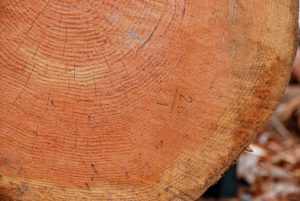 Western Apache fire management once reshaped Arizona’s forests — and tree rings prove it. A new study combining tree-ring evidence and historical data shows that for centuries, Western Apache communities systematically controlled fire activity across their homeland, reducing the role of climate in driving wildfires. Led by Southern Methodist University fire scientist Christopher Roos, the research analyzed 649 fire-scarred trees from 34 sites in central and eastern Arizona and compared them to several thousand samples from the broader Southwest. The findings, published in the Proceedings of the National Academy of Sciences, show that Apache burns were more frequent, smaller, and timed differently than fires elsewhere in the region. Scientists found that in Apache territory, fires often occurred in late April and May — months when community members were engaged in subsistence activities in pine forests.
Western Apache fire management once reshaped Arizona’s forests — and tree rings prove it. A new study combining tree-ring evidence and historical data shows that for centuries, Western Apache communities systematically controlled fire activity across their homeland, reducing the role of climate in driving wildfires. Led by Southern Methodist University fire scientist Christopher Roos, the research analyzed 649 fire-scarred trees from 34 sites in central and eastern Arizona and compared them to several thousand samples from the broader Southwest. The findings, published in the Proceedings of the National Academy of Sciences, show that Apache burns were more frequent, smaller, and timed differently than fires elsewhere in the region. Scientists found that in Apache territory, fires often occurred in late April and May — months when community members were engaged in subsistence activities in pine forests.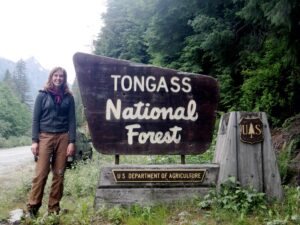 The Trump administration has announced plans to rescind the 2001 Roadless Rule, changing the political and timber industry landscape in the Tongass National Forest for the third time in five years. The Roadless Rule prevents logging, road building and mining on national forest lands. It was last repealed in 2020 and restored in 2023, and has been subject to decades of debate. Timber operators say the rescission could help a dying industry – if it passes through Congress. The U.S. Forest Service owns approximately 78% of the land in Southeast Alaska, meaning timber operators are dependent on the federal agency for a majority of their supply. Kirk Dahlstrom, co-owner of Viking Lumber Co. in Klawock, said the agency is nine years behind on offering timber supply for the Southeast industry. He said his business will not survive if land management remains under Forest Service control. “We got starved to almost nothing.”
The Trump administration has announced plans to rescind the 2001 Roadless Rule, changing the political and timber industry landscape in the Tongass National Forest for the third time in five years. The Roadless Rule prevents logging, road building and mining on national forest lands. It was last repealed in 2020 and restored in 2023, and has been subject to decades of debate. Timber operators say the rescission could help a dying industry – if it passes through Congress. The U.S. Forest Service owns approximately 78% of the land in Southeast Alaska, meaning timber operators are dependent on the federal agency for a majority of their supply. Kirk Dahlstrom, co-owner of Viking Lumber Co. in Klawock, said the agency is nine years behind on offering timber supply for the Southeast industry. He said his business will not survive if land management remains under Forest Service control. “We got starved to almost nothing.”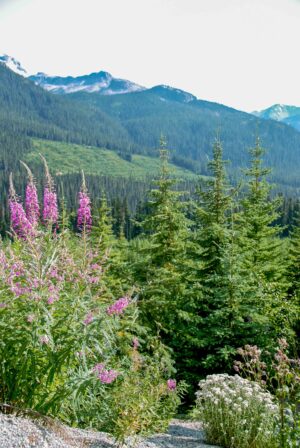 The U.S. Forest Service will abandon its nine regional offices as its parent Department of Agriculture consolidates out of Washington, D.C., according to a memo released on Thursday by Agriculture Secretary Brooke Rollins. “President Trump was elected to make real change in Washington, and we are doing just that by moving our key services outside the beltway and into great American cities across the country,” Rollins said in a statement announcing the reorganization. “We will do so through a transparent and common-sense process that preserves USDA’s critical health and public safety services the American public relies on. We will do right by the great American people who we serve and with respect to the thousands of hardworking USDA employees who so nobly serve their country.” The reorganization plan left many Forest Service experts wondering what the benefit would be, including former Forest Service Chief Dale Bosworth, who served during the George W. Bush administration.
The U.S. Forest Service will abandon its nine regional offices as its parent Department of Agriculture consolidates out of Washington, D.C., according to a memo released on Thursday by Agriculture Secretary Brooke Rollins. “President Trump was elected to make real change in Washington, and we are doing just that by moving our key services outside the beltway and into great American cities across the country,” Rollins said in a statement announcing the reorganization. “We will do so through a transparent and common-sense process that preserves USDA’s critical health and public safety services the American public relies on. We will do right by the great American people who we serve and with respect to the thousands of hardworking USDA employees who so nobly serve their country.” The reorganization plan left many Forest Service experts wondering what the benefit would be, including former Forest Service Chief Dale Bosworth, who served during the George W. Bush administration.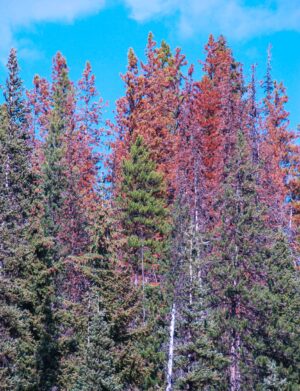 Since the mid-1990s, so-called blooms of bark beetles have affected nearly 80% of Colorado’s 4.2 million acres of pine forest, reducing decades-old trees into firewood. In the process, they’ve literally laid the groundwork for some of the state’s most devastating forest fires, from the 2016 Beaver Creek Fire in Walden to the 2020 East Troublesome Fire in Grand County. Despite rendering postcard views into wildfire fodder, West does not call these beetles a pest. Like fire, they’re just a part of nature here, filling a vital biological niche in their native habitat. In the long term, experts say they even make forests healthier. “Bark beetles serve as the ecological sanitizers of the forest,” said West, who helps manage Colorado’s 24 million acres of state forestland. One paper,
Since the mid-1990s, so-called blooms of bark beetles have affected nearly 80% of Colorado’s 4.2 million acres of pine forest, reducing decades-old trees into firewood. In the process, they’ve literally laid the groundwork for some of the state’s most devastating forest fires, from the 2016 Beaver Creek Fire in Walden to the 2020 East Troublesome Fire in Grand County. Despite rendering postcard views into wildfire fodder, West does not call these beetles a pest. Like fire, they’re just a part of nature here, filling a vital biological niche in their native habitat. In the long term, experts say they even make forests healthier. “Bark beetles serve as the ecological sanitizers of the forest,” said West, who helps manage Colorado’s 24 million acres of state forestland. One paper, 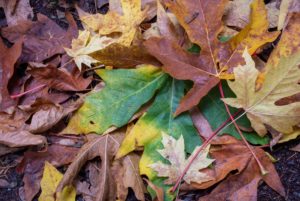 Near the bottom of a shady hillside in Jericho, a lone beech tree stretches high into the canopy, a relic of a bygone forest. Through luck or (hopefully) genetics, this mighty tree has avoided contracting beech bark disease—a fatal fungal pathogen that has proven deadly to mature beech trees. And it stands just outside a hotspot where a new pathogen called beech leaf disease (BLD) is spreading across Vermont forests. “Beech is here a lot as a sapling … but if you look out into the forest it’s not really common in the overstory,” said Jess Wikle Ph.D. ’24, lecturer in forestry and manager of the University of Vermont’s Research Forests. The beech trees that do succumb often send out a series of root sprouts before they die, turning a forest of big trees into a thicket of saplings. Beech leaf disease is different. It seems to be spreading faster and young beech trees tend to die first.
Near the bottom of a shady hillside in Jericho, a lone beech tree stretches high into the canopy, a relic of a bygone forest. Through luck or (hopefully) genetics, this mighty tree has avoided contracting beech bark disease—a fatal fungal pathogen that has proven deadly to mature beech trees. And it stands just outside a hotspot where a new pathogen called beech leaf disease (BLD) is spreading across Vermont forests. “Beech is here a lot as a sapling … but if you look out into the forest it’s not really common in the overstory,” said Jess Wikle Ph.D. ’24, lecturer in forestry and manager of the University of Vermont’s Research Forests. The beech trees that do succumb often send out a series of root sprouts before they die, turning a forest of big trees into a thicket of saplings. Beech leaf disease is different. It seems to be spreading faster and young beech trees tend to die first. The Nature Conservancy announced it planted 2.5 million trees in northern Minnesota this year in partnership with the U.S. Forest Service, Minnesota Department of Natural Resources and three county land departments. This is a record number for the organization, and the second consecutive year the program has planted more than 2 million tree seedlings The tree seedlings were planted on public lands—across 5,810 acres of national forest, state forest, state park and county-managed forest lands—and covered six counties, including Cook, Lake, Saint Louis, Itasca, Cass and Carlton County. The planting areas included 1.8 miles along scenic Highway 61 and 41 miles of stream, river and lakeshore that connect to Lake Superior. It also included 1,740 acres of moose habitat enhancement, completed in partnership with the Ruffed Grouse Society and Minnesota Moose Habitat Collaborative—whose tribal representation is critical in maintaining habitat for this species of cultural importance to Indigenous communities.
The Nature Conservancy announced it planted 2.5 million trees in northern Minnesota this year in partnership with the U.S. Forest Service, Minnesota Department of Natural Resources and three county land departments. This is a record number for the organization, and the second consecutive year the program has planted more than 2 million tree seedlings The tree seedlings were planted on public lands—across 5,810 acres of national forest, state forest, state park and county-managed forest lands—and covered six counties, including Cook, Lake, Saint Louis, Itasca, Cass and Carlton County. The planting areas included 1.8 miles along scenic Highway 61 and 41 miles of stream, river and lakeshore that connect to Lake Superior. It also included 1,740 acres of moose habitat enhancement, completed in partnership with the Ruffed Grouse Society and Minnesota Moose Habitat Collaborative—whose tribal representation is critical in maintaining habitat for this species of cultural importance to Indigenous communities. The European Court of Justice (ECJ) has issued a ruling on suspending logging to protect bird nesting sites in Estonia. However, the Ministry of Climate and forestry industry representatives interpret the ruling in opposing ways, each claiming their stance is the right one. The final decision on the matter is set to be made in the autumn by the Estonian Supreme Court, which should clarify whether current practices will be changed or not. Head of the Ministry of Climate’s Biodiversity Protection Department, Timo Kark, said overall the ECJ considered the suspension of logging to be justified. “In the opinion of the European Court, the birds directive must be interpreted such that its provisions apply to all bird species, including those that are not protected. So any activity that may result in birds being killed, such as logging during the spring-summer nesting period, can be suspended,” Kark said.
The European Court of Justice (ECJ) has issued a ruling on suspending logging to protect bird nesting sites in Estonia. However, the Ministry of Climate and forestry industry representatives interpret the ruling in opposing ways, each claiming their stance is the right one. The final decision on the matter is set to be made in the autumn by the Estonian Supreme Court, which should clarify whether current practices will be changed or not. Head of the Ministry of Climate’s Biodiversity Protection Department, Timo Kark, said overall the ECJ considered the suspension of logging to be justified. “In the opinion of the European Court, the birds directive must be interpreted such that its provisions apply to all bird species, including those that are not protected. So any activity that may result in birds being killed, such as logging during the spring-summer nesting period, can be suspended,” Kark said.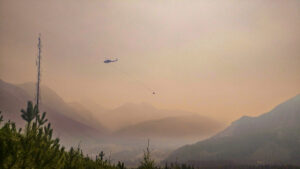 Recent research
Recent research
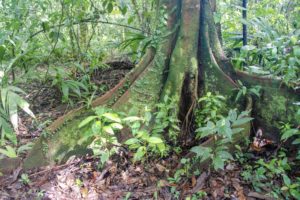 In its report “
In its report “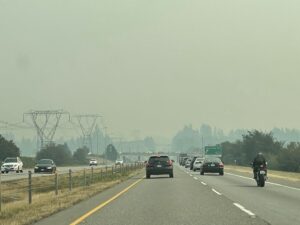 As wildfire smoke continues to drift into Michigan from Canada, experts say the increasing frequency and intensity of wildfires across North America are tied to a combination of climate change and decades of forest management practices. “Fires are a natural part of many forest ecosystems,” said Chad Papa, the Director of the Forest Carbon and Climate Program Department of Forestry at Michigan State University. “But what we’re seeing now is a major departure from historic fire regimes, with hotter, more catastrophic fires and slower forest recovery.” In the western U.S., a history of fire suppression and reduced timber harvesting has led to denser forests that are more prone to combustion. Laws enacted in the 20th century often restricted controlled burns, which experts said have contributed to overgrown conditions that increase wildfire risk.
As wildfire smoke continues to drift into Michigan from Canada, experts say the increasing frequency and intensity of wildfires across North America are tied to a combination of climate change and decades of forest management practices. “Fires are a natural part of many forest ecosystems,” said Chad Papa, the Director of the Forest Carbon and Climate Program Department of Forestry at Michigan State University. “But what we’re seeing now is a major departure from historic fire regimes, with hotter, more catastrophic fires and slower forest recovery.” In the western U.S., a history of fire suppression and reduced timber harvesting has led to denser forests that are more prone to combustion. Laws enacted in the 20th century often restricted controlled burns, which experts said have contributed to overgrown conditions that increase wildfire risk.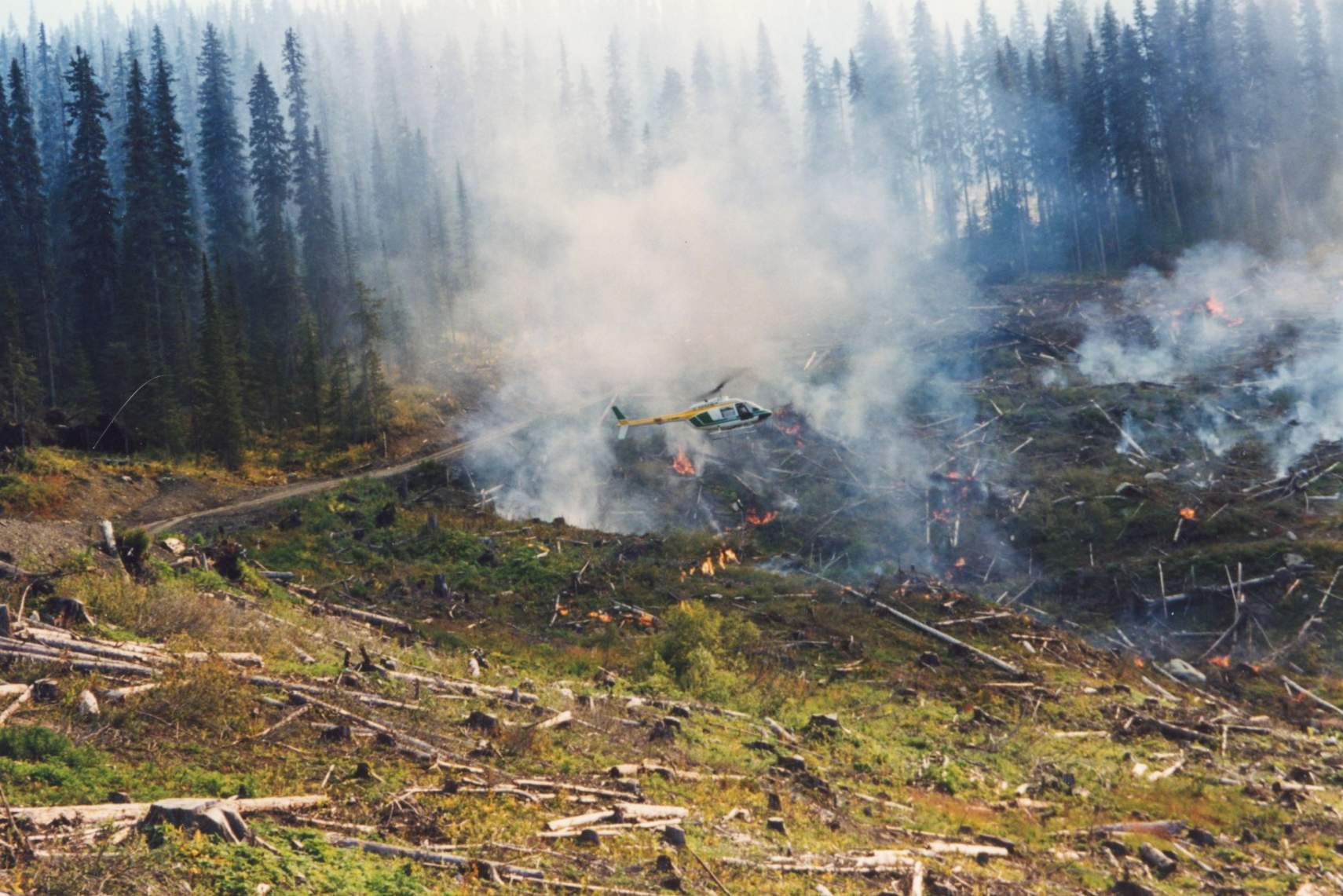 Western Washington state is one of the wettest places in the country. In the North Cascade mountains and on the Olympic Peninsula, lush cedars, ferns and mosses form classic Pacific Northwest rainforests. But even here, climate change is making wildfires more likely. And the state is figuring out how to respond. “It used to be that it really wasn’t until mid-August that fuels dried out in western Washington,” said Derek Churchill, a forest health scientist at the Washington Department of Natural Resources. “Now it’s July or earlier.” In fact, last month human activity started a wildfire in the Olympic national forest. As of Tuesday, it had grown to more than 5,100 acres and some campgrounds were under evacuation orders… But global warming is changing fire patterns in the state. Washington’s summers are growing longer, hotter and drier, resulting in an extended fire season with more desiccated fuel available. [A free account is required to read this article]
Western Washington state is one of the wettest places in the country. In the North Cascade mountains and on the Olympic Peninsula, lush cedars, ferns and mosses form classic Pacific Northwest rainforests. But even here, climate change is making wildfires more likely. And the state is figuring out how to respond. “It used to be that it really wasn’t until mid-August that fuels dried out in western Washington,” said Derek Churchill, a forest health scientist at the Washington Department of Natural Resources. “Now it’s July or earlier.” In fact, last month human activity started a wildfire in the Olympic national forest. As of Tuesday, it had grown to more than 5,100 acres and some campgrounds were under evacuation orders… But global warming is changing fire patterns in the state. Washington’s summers are growing longer, hotter and drier, resulting in an extended fire season with more desiccated fuel available. [A free account is required to read this article]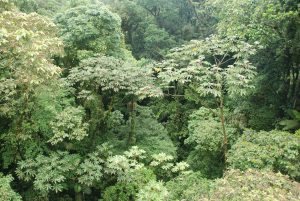 “Protecting diversity tends to be an afterthought when it comes to carbon-offsetting projects,” says conservation scientist Aakash Lamba, a CNCS postdoctoral research fellow. “The narrative at the moment is usually carbon first, biodiversity second.”In certain reforestation initiatives, for example, a single tree species might be planted because it can grow quickly and absorb large amounts of carbon in a short span of time. But the lack of diversity in such monocultures can lead to a slew of problems, including increased disease risk and soil degradation. Recognizing the interconnectedness of biodiversity and carbon offsetting goals could unlock unforeseen opportunities and funding for conservation programmes, Koh points out. The centre’s researchers have set about detailing how ‘win-win’ conservation projects have already brought about both biodiversity gains and carbon mitigation benefits. India’s tiger reserves provide a prime example of how habitat protection leads to more intact ecosystems and bolsters carbon sequestration.
“Protecting diversity tends to be an afterthought when it comes to carbon-offsetting projects,” says conservation scientist Aakash Lamba, a CNCS postdoctoral research fellow. “The narrative at the moment is usually carbon first, biodiversity second.”In certain reforestation initiatives, for example, a single tree species might be planted because it can grow quickly and absorb large amounts of carbon in a short span of time. But the lack of diversity in such monocultures can lead to a slew of problems, including increased disease risk and soil degradation. Recognizing the interconnectedness of biodiversity and carbon offsetting goals could unlock unforeseen opportunities and funding for conservation programmes, Koh points out. The centre’s researchers have set about detailing how ‘win-win’ conservation projects have already brought about both biodiversity gains and carbon mitigation benefits. India’s tiger reserves provide a prime example of how habitat protection leads to more intact ecosystems and bolsters carbon sequestration.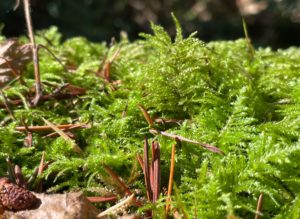 When we hear the terms “biodiversity crisis” and “mass extinction”, charismatic animals such as tigers, rhinos and sea turtles often spring to mind. But what about the small, inconspicuous species that play an important role in our ecosystems despite their size? Do they receive the attention and protection they need? Mosses may seem insignificant, but they form a rich and widespread group with around 20,000 species worldwide. Despite their small size, they play an important role in many ecosystems, for example by retaining moisture, serving as carbon sinks and contributing to nitrogen fixation in forests. Yet over 30 per cent of European species are endangered or potentially endangered. Many are poorly researched and often inadequately protected.
When we hear the terms “biodiversity crisis” and “mass extinction”, charismatic animals such as tigers, rhinos and sea turtles often spring to mind. But what about the small, inconspicuous species that play an important role in our ecosystems despite their size? Do they receive the attention and protection they need? Mosses may seem insignificant, but they form a rich and widespread group with around 20,000 species worldwide. Despite their small size, they play an important role in many ecosystems, for example by retaining moisture, serving as carbon sinks and contributing to nitrogen fixation in forests. Yet over 30 per cent of European species are endangered or potentially endangered. Many are poorly researched and often inadequately protected.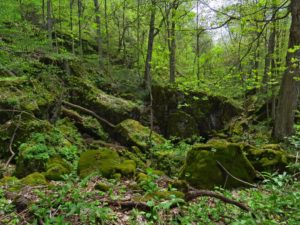 New research is now showing that this key carbon sink is weakening, and the decline is accelerating. A recent study published in
New research is now showing that this key carbon sink is weakening, and the decline is accelerating. A recent study published in 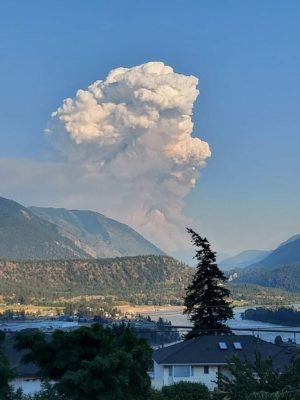 Hundreds of residents who were forced out of their homes by a wildfire burning near Cameron Lake on Vancouver Island are being allowed to return. The Regional District of Nanaimo (RDN) has posted an update removing 257 properties from its evacuation order, although residents remain on alert and must be ready to leave right away. The district said 37 properties in Little Qualicum River Village remain under evacuation order due to the six-square-kilometre wildfire that is now classified as being held. The B.C. Wildfire Service updated the status of the Wesley Ridge blaze, burning about 60 kilometres northwest of Nanaimo, saying it’s not expected to grow beyond its existing containment lines. An update from the wildfire service on Monday said the Wesley Ridge fire did not grow Sunday and was displaying mostly rank-one fire behaviour, a “smouldering ground fire with no open flame.”
Hundreds of residents who were forced out of their homes by a wildfire burning near Cameron Lake on Vancouver Island are being allowed to return. The Regional District of Nanaimo (RDN) has posted an update removing 257 properties from its evacuation order, although residents remain on alert and must be ready to leave right away. The district said 37 properties in Little Qualicum River Village remain under evacuation order due to the six-square-kilometre wildfire that is now classified as being held. The B.C. Wildfire Service updated the status of the Wesley Ridge blaze, burning about 60 kilometres northwest of Nanaimo, saying it’s not expected to grow beyond its existing containment lines. An update from the wildfire service on Monday said the Wesley Ridge fire did not grow Sunday and was displaying mostly rank-one fire behaviour, a “smouldering ground fire with no open flame.”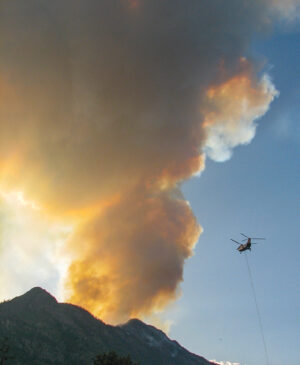 Forest Minister Ravi Parmar told reporters on Wednesday (Aug. 6) that in the past week, roughly 70,000 lightning strikes have hit B.C., leading to a “sudden increase” in fire activity. He also said that the B.C. Wildfire Service has largely been able to keep the fires from spreading. So far this season, more than 850 wildfires have sparked in B.C, but the province has kept 85 per cent of them smaller than four hectares, and only 120 were active on Aug. 6. As of Aug. 11 last year, there had been more than 1,300 fires, with almost 400 still active on that date. The only current “wildfire of note” is the Wesley Ridge fire on Vancouver Island. The fire is at Cameron Lake, between Parksville and Port Alberni, and is 530 hectares in size. Evacuation orders are in place for 400 homes, and 700 more are on evacuation alert.
Forest Minister Ravi Parmar told reporters on Wednesday (Aug. 6) that in the past week, roughly 70,000 lightning strikes have hit B.C., leading to a “sudden increase” in fire activity. He also said that the B.C. Wildfire Service has largely been able to keep the fires from spreading. So far this season, more than 850 wildfires have sparked in B.C, but the province has kept 85 per cent of them smaller than four hectares, and only 120 were active on Aug. 6. As of Aug. 11 last year, there had been more than 1,300 fires, with almost 400 still active on that date. The only current “wildfire of note” is the Wesley Ridge fire on Vancouver Island. The fire is at Cameron Lake, between Parksville and Port Alberni, and is 530 hectares in size. Evacuation orders are in place for 400 homes, and 700 more are on evacuation alert. New Brunswickers will be permitted once again to enter the province’s forests, following a bout of cool weather that has reduced the risk of wildfires, officials said Monday. Starting Tuesday at 12:01 a.m., the province will lift its ban on access to Crown land, parts of which have been scorched in recent weeks by wildfires triggered by drought-like conditions and lightning. “I would like to thank New Brunswickers for their co-operation, for changing their plans for protecting our forests and communities,” Premier Susan Holt said Monday. About two weeks ago, there were 39 active wildfires across the province, and temperatures were close to 40 C with the humidex, said Natural Resources Minister John Herron. But over the past couple of days, temperatures have fallen well into the “very low teens” at night, he said, adding that parts of New Brunswick got rain on Monday, which has helped in firefighting.
New Brunswickers will be permitted once again to enter the province’s forests, following a bout of cool weather that has reduced the risk of wildfires, officials said Monday. Starting Tuesday at 12:01 a.m., the province will lift its ban on access to Crown land, parts of which have been scorched in recent weeks by wildfires triggered by drought-like conditions and lightning. “I would like to thank New Brunswickers for their co-operation, for changing their plans for protecting our forests and communities,” Premier Susan Holt said Monday. About two weeks ago, there were 39 active wildfires across the province, and temperatures were close to 40 C with the humidex, said Natural Resources Minister John Herron. But over the past couple of days, temperatures have fallen well into the “very low teens” at night, he said, adding that parts of New Brunswick got rain on Monday, which has helped in firefighting. The air quality has finally improved after several days of wildfire smoke hanging over much of southern Quebec. Montreal, along with several other cities in the province, were dealt an air quality advisory starting Saturday and clearing up Monday evening. But this year, the smoke causing the poor air quality isn’t coming from within the province but rather from the fires raging in the Prairies. While Quebec is seeing a rather tame wildfire season, this year is still gearing up to be another intense season for other parts of Canada. So far, 2025 has seen wildfires consume 6.5 million hectares. Last year the number totalled 5.3 million, and in 2023 — Canada’s worst wildfire season on record — a little over 16 million hectares burned. “The thing that is quite exceptional right now is that we had three years in a row with very, very high fire activity in Canada,” said Boulanger. The three most active fire seasons since 1995 have been recorded between 2023 and 2025, he said.
The air quality has finally improved after several days of wildfire smoke hanging over much of southern Quebec. Montreal, along with several other cities in the province, were dealt an air quality advisory starting Saturday and clearing up Monday evening. But this year, the smoke causing the poor air quality isn’t coming from within the province but rather from the fires raging in the Prairies. While Quebec is seeing a rather tame wildfire season, this year is still gearing up to be another intense season for other parts of Canada. So far, 2025 has seen wildfires consume 6.5 million hectares. Last year the number totalled 5.3 million, and in 2023 — Canada’s worst wildfire season on record — a little over 16 million hectares burned. “The thing that is quite exceptional right now is that we had three years in a row with very, very high fire activity in Canada,” said Boulanger. The three most active fire seasons since 1995 have been recorded between 2023 and 2025, he said.